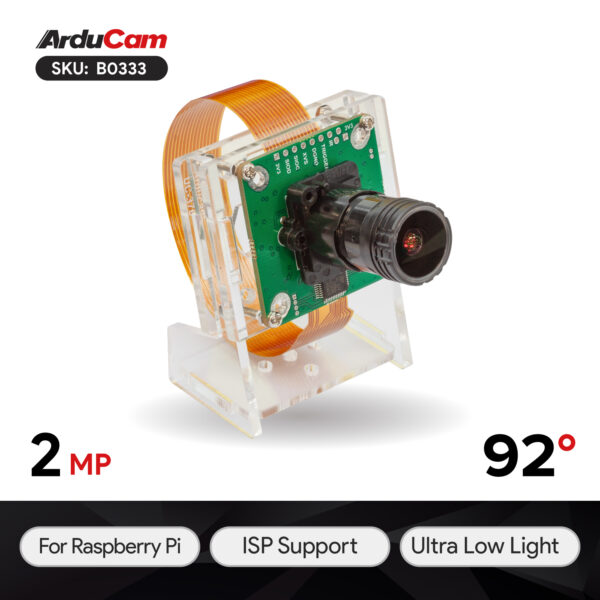Ultra Low Light Starvis Camera
Introduction
Low light cameras (sometimes called high sensitivity cameras) are a type of video camera with proprietary design features that enhance the capabilities of the camera to record in settings with little to no illumination.
These cameras, therefore, are typically suitable for night uses. Besides taking pictures at night, such camera modules, working on platforms like Raspberry Pi, are active in a variety of usage scenarios like environmental surveillance, industrial monitoring and autonomous mobile robots acting at night.
Lens aperture determines the quantity of light that falls on the sensor. This is a design consideration than a specification of an imaging system. To capture images in low light conditions, a larger lens aperture is recommended allowing more photons to reach the sensor.
Arducam performs well in this core spec. The aperture is as wide as F.NO 0.95 which allows more light to enter, that's why we call it an 'ultra low light camera'. With the Sony 2MP IMX462 Starvis colour sensor, for example, our 1080P HD wide-angle Pivariety camera module for Raspberry Pi can easily deal with illumination as low as 0.01lux. Same superior performance in darkness can be achieved with IM'X327, IMX290 sensors, too.
More Arducam items catering for low illumination environments are to be designed, with two goals that are opposite and complementary to each other. One is to recognise what's bad in the dark, and the other is to find what's nice in there.
Product
| Product Image | SKU | Pin/Connect type | Features | Lens Type | Field of View(HxV) | Focus Type | IR Sensitivity |
|---|---|---|---|---|---|---|---|
 |
B0333 | 22/TOP | Ultra Low Light | M16 | 92°(H) x 51.7°(V) | Manual Focus | without IR cut Filter |